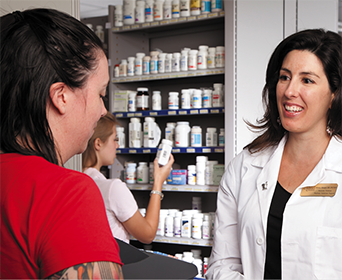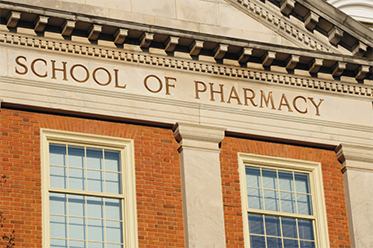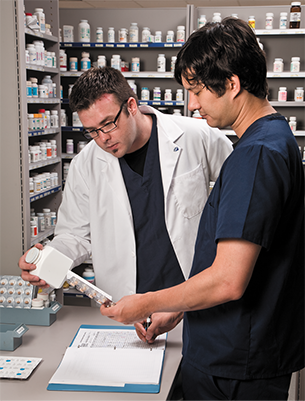1.5 The Roles and Responsibilities of a Pharmacist
The role of pharmacists and technicians has always been to safeguard and enhance the health of the patients whom they serve. What has changed is the complexity of this task. Pharmacists assume more patient care responsibilities and subsequently more liability. Today, with the vast number of medications on the market, pharmacists need to be vigilant in detecting an error in the prescribing and dosing of a medication, a problematic combination of drugs, a dangerous use of a drug (such as the use of a cancer-causing drug or a drug that can cause birth defects if used by a pregnant patient), and any interactions of a medication with food, drink, or other medications. A pharmacist must also be watchful for any adverse reaction that is reported by patients.
Technicians aid pharmacists in this vigilance and must feel empowered to ask questions when they see something out of the ordinary or amiss.
Although pharmacists still supervise the dispensing and compounding of medications, they are increasingly spending more time doing the following tasks:

When dispensing a prescription medication, the pharmacist plays an important role in educating a patient about side effects, potential interactions with other medications, and dosing schedules.
 Pharm Fact
Pharm Fact
Since 2000, there has been an increase of over 60% in new pharmacy schools in the United States, which have opened to address expected pharmacist shortages.
assessing information on a patient’s medical, medication, and allergy history
checking age-appropriate dosing for medication and potential duplications of therapy
counseling patients on possible side effects and adverse reactions
screening patients for chronic diseases such as hypertension and diabetes
ensuring positive outcomes to therapy for hypertension, diabetes, asthma, and high cholesterol
counseling patients on computer alerts for interactions with prescription and OTC drugs and dietary supplements
screening and treating patients with illnesses that can be safely self-medicated
assisting and supporting motivated patients to quit smoking
providing consumers with recommendations on OTC drugs, vitamins, minerals, herbs, and dietary supplements
providing up-to-date and accurate information to all prescribers as a drug therapy expert
dispensing information on proper use of medical supplies and equipment, especially for diabetics
educating on and monitoring the safe use of controlled substances
vaccinating high-risk patients for preventable diseases such as influenza, pneumonia, and shingles
Educational Requirements of a Pharmacist
Pharmacy personnel shortages are projected due to both an aging population that requires more prescriptions and the pharmacist’s expanded counseling role. Some pharmacy technicians go on to pursue pharmacy degrees, having gained valuable experience that helped shape and validate their career goals.

All US schools of pharmacy now offer the equivalent of at least four years of professional education and experiential training, in addition to at least two years of undergraduate science courses.
For a pharmacy degree, all US pharmacy colleges/schools offer a doctorate of pharmacy or PharmD. In Canada, pharmacy students graduate with a Bachelor of Science degree in Pharmacy or a Doctorate of Pharmacy, depending on their program.
 IN THE REAL WORLD
IN THE REAL WORLD
The Centers for Medicare & Medicaid Services conservatively estimates that the cost of healthcare in the United States is $3.5 trillion per year, or approximately 18% of the GDP. Healthcare costs associated with an aging population and technological innovations are projected to increase, becoming 20% of the GDP within the next decade.
According to IMS Health (a healthcare information service), the segment of funds invested in prescriptions in the United States in 2017 was $450 billion; the cost and number of prescriptions continue to rise. It is estimated that 4.78 billion prescriptions will be dispensed in the United States in the year 2021. In Canada, with a far smaller population, currently 500 million prescriptions are being filled annually, with their number also increasing.
Many pharmacy schools in the United States prefer that students enter with a bachelor’s degree, but it is not a requirement. Pre-pharmacy undergraduate coursework typically consists of anatomy, biology, calculus, chemistry, microbiology, physics, and statistics. A pharmacy applicant typically completes an online application and takes the Pharmacy College Admission Test (PCAT).
Several colleges allow incoming students to apply to zero- to six-year pharmacy programs. Zero-to-six-year pharmacy programs admit students without prerequisites or PCAT results. A student enrolls in the pharmacy program and completes both their prerequisite courses and pharmacy school courses within 6 years. Acceptance into a pharmacy school has become intensely competitive. Many schools require an on-site personal interview with both faculty members and current pharmacy students.
 Pharm Fact
Pharm Fact
The typical successful pharmacy school applicant in the United States has a prior degree (typically in biology or chemistry), a grade point average (GPA) of 3.5–4.0, good scores on the PCAT (>400), experience in pharmacy and community service projects, excellent communication skills, and self-motivation.
Once accepted at a university, pharmacy students generally find the coursework extremely challenging. Basic and clinical science courses are combined with practice or internship time in community and hospital pharmacies interspersed at different times throughout the curriculum. The last year is spent working at various practice sites as a healthcare team member learning patient care skills. At graduation, it is traditional for all graduates to recite the Oath of a Pharmacist, affirming “I promise to devote myself to a lifetime of service to others through the profession of pharmacy” and vowing to relieve suffering and improve the welfare of others, among other honorable promises.

The pharmacist is ultimately responsible and liable for the pharmacy technician’s work. All prescriptions and medication orders must be checked by the pharmacist.
Licensing of a Pharmacist
A licensed pharmacist must complete a designated number of intern hours (within and/or outside the academic program) and then pass a national standardized examination, including a state-specific law examination (laws differ between states). Though licensure is state-specific, a process for reciprocation (recognizing other state licenses) exists through the National Association of Boards of Pharmacy (NABP), permitting practice in different states. Pharmacists who work in a government facility, such as a VA hospital, are required to have a valid license in only one state.
A pharmacy license must be renewed annually or biannually, depending on the state. Most states require the completion of a designated number of continuing education credits (commonly 30 units every two years) for relicensure.